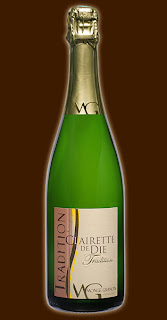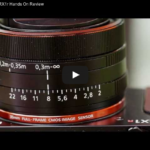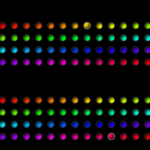 I’m a fan of sparkling beverages. Especially before dinner. If it’s hot, nothing takes the edge off a pre-dinner thirst like a big cold glass of sparkling water or two. But sometimes, one is thirsty for something with a little more than water. My father taught me to drink Campari and soda – a combination I still enjoy when an aperitif is needed to remind me I’m hungry. And over the last few years, we’ve started to enjoy sparkling wines as a pre-dinner beverage.
I’m a fan of sparkling beverages. Especially before dinner. If it’s hot, nothing takes the edge off a pre-dinner thirst like a big cold glass of sparkling water or two. But sometimes, one is thirsty for something with a little more than water. My father taught me to drink Campari and soda – a combination I still enjoy when an aperitif is needed to remind me I’m hungry. And over the last few years, we’ve started to enjoy sparkling wines as a pre-dinner beverage.
Specifically, and thanks to the LCBO, we’ve discovered that many regions of France produce inexpensive sparkling wines, which may not match the refinement of Champagnes, yet have their own combination of charms with a variety of interesting tastes. My observation is that, in addition to the cost of Champage, the Champage palette is limited. These two factors have diminished my attraction to the premiere bubbly wine.
Every other week, the LCBO’s Vintages release contains one or more French sparkling wines, usually called “Crémant”. Each French wine region seems to have its own Crémant and many regions have several producers. These sparkling wines land in Ontario at under $20 a bottle. The mixture of grapes (and soils) gives each a specific nose and taste. I’ve yet to be disappointed. Over the last few years, I’ve found all of them to be more agreeable to my taste than alternate bubblies like Freixenet or Henkell.
We’ve also been doing a little research into sparkling wines. As a result, last summer Kim and I took a detour from our bike trip along the Canal du Midi to head to Limoux, the town which claims (at the Abbey of Saint Hilaire) to have bottled the first bubbles (Le Première Bulle from Sieur d’Arques, from one of the wineries we visited, is available from the SAQ: $18.20) around 1531. The original sparkling wine, called “Blanquette” is made primarily from Mauzac grapes, although you will also now find Crémants from the Limoux region (made with the more traditional Chardonnay or Chenin Blanc grapes). The Mauzac grape provides a distinctive and agreeable fruity taste.
While visiting Limoux and the surrounding region, we were also able to purchase a Blanquette with the label “methode ancestrale”, which provides a lower alcohol rating (about 5%), an even fruitier taste and less fizz. Wikipedia suggests that it should be cloudy, but we were served it clear.
A few weeks ago (February 2, 2013), the LCBO released a new variation on sparkling wine– Clairette de Die Tradition from Monge Granon ($17.95). Searching its history, we find the claim that Clairette was first made by a careless shepherd in the Die region of the Rhone valley about 2,000 years ago, who inadvertently left a few bottles sitting in the river over the winter. This may be an apocryphal story, but it certainly speaks to a longer tradition of sparkling wine that claimed either in Limoux or Champagne. Clairette de Die made from Muscat and Clairette grapes. It’s also low in alcohol (8%). The nose and taste is fruity, predominantly peach and apricot. It’s very easy to drink, but obviously lacking in some sophistication. I encourage you to try a bottle or two, if only to acknowledge its history, however nebulous that may be. According to the LCBO web site there’s still a good stock available of this Vintages release available.
Are there sparkling wines you’d like to recommend?




